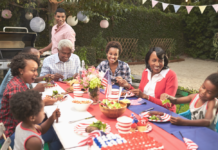Visiting your loved one is a time to catch up, laugh, and reminisce on memories. But it can also serve a duel purpose, specifically by verifying and ensuring their safety and health is supported.
So the next time you visit, assess these five common areas and traits, including the safety of their home and if activities of daily living are still being completed.
Common Areas to Assess When Visiting Loved Ones
1. Activities of Daily Living
Activities of daily living (ADLs) are routine activities completed each and every day without needing assistance from others. Common and basic ADLs relate personal care, including bathing, showering, dressing, going to the bathroom, and transferring.
Especially if your loved one is living independently, it is important to validate they are still able to complete such tasks. Indicators to help you identify whether or not challenges are present include:
- Observing the kitchen: Is there food stocked in the pantry? Does the fridge contain fresh food or is are there any expired labels?
- Assessing personal hygiene: Does it appear as if they regularly shower? Are their clothes clean? What about nail care?
- Noticing home cleanliness: Are areas picked up and tidied? Are dishes left in the sink or put up from the dishwasher?
2. Home Safety
Seniors are more prone to falls and injuries related to a number of aging health problems and issues, including reduced muscle mass, dehydration, age-related diseases, and certain medications.
While some of those risks are challenging to modify, you can help increase the safety of your loved one and gain a peace of mind by evaluating their home safety. To ensure your loved one is protected, consider the following safety areas and tips:
General Home Safety
These general safety tips can be applied throughout the entire house:
- Flooring: Confirm there is no clutter that could be stumbled upon and tripped over, including cords and rugs.
- Lighting: Increase lighting to increase visibility, along with installing nightlights such as in the bathroom.
- Doorways: Free doorways of clutter and make sure they are large enough to accommodate a wheelchair or walker if needed.
- Stairways: If stairways are used, add a second railing or wheelchair ramp as needed.
Bathroom Safety
Bathrooms are one of the riskiest areas for seniors to fall, mostly related to slick surfaces and tight corridors. Offer seniors a sense of security and reduce the likelihood of falling by installing railings, using nonslip mats, and confirming seats are sturdy on the toilet and in the shower.
Kitchen Safety
Keep seniors safe in the kitchen by utilizing lower cabinets, using locks as necessary, staying cautious of sharp corners, and verifying plug-in safety.
3. Physical Health
Sustaining physical health as a senior is key, as it helps them remain at home independently and safely. Identifying aging health issues allows an opportunity to intervene and these red flags can help you recognize a need for medical attention:
- Have you noticed any declines in vigor, strength, and overall health?
- Has your loved one complained of any pain or other symptoms?
- Are there any weight changes? What about changes in appetite and food intake?
- Does your loved one regularly visit the doctor? Any recent and frequent hospitalizations?
- Is your loved one experiencing any limitations related to a health condition or disease?
4. Emotional Wellbeing
Along with physical health, emotional health should not go unnoticed. In fact, seniors are at an increased risk of depression based on a number of factors, including after retirement.
Seniors are also at risk of dementia and Alzheimer’s disease, which deserves high consideration relative to extreme risks that come with a declining memory and losing the ability to think clearly.
Assess changes in emotional wellbeing and brain health by questioning the following:
- Does your loved one seem more forgetful than usual?
- Are objects lost and unable to be retraced?
- Do they seem disconnected from social interactions? Are they cancelling plans?
- Are there any changes in driving patterns?
- Is your loved one having difficulty communicating? What about reading or writing?
- Have they started to wander more and become disoriented?
- Do you witness any changes in mood or personality?
5. Medication Management and Compliance
If your loved one is taking medication for any aging health issue or disease, it is essential to make sure they are complying to them. When visiting your loved one, review medications and assort them based on required use, along with considering a medication reminder system if needed.
But not only is it important to be complying to medications, but taking them the right way. Keeping a list of medications and evaluating with a doctor or pharmacist can help certify they are being taken properly and reduce the risk of food and drug interactions.
These 10 tips to keep medications straight can also assist in their management and compliance, including disclosing all medications to primary care providers, building their use as a habit, and managing side effects as needed.
What Now?
After assessing these areas, it is imperative to acknowledge and address any deviations in behaviors and potential geriatric health problems as their biggest advocate.
If your loved one is resistant or becomes argumentative, allow them time to internalize such frustrations. Getting additional support, including from family members and healthcare providers, can likewise help ease the process and ensure support from all respective parties.






